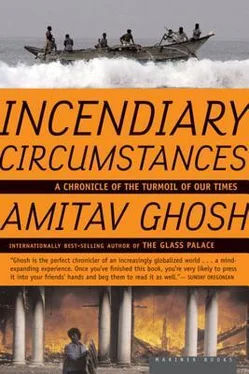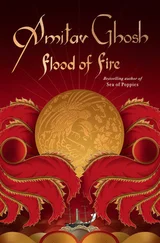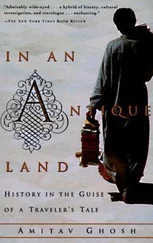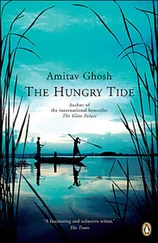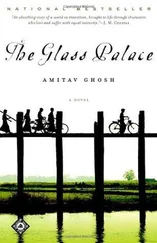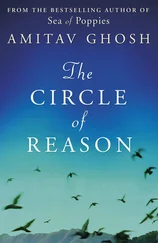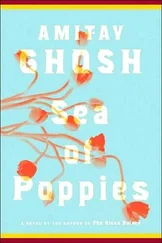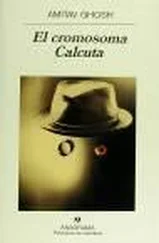She saw her parents only once in that time. One day she was sent to a village near Kompong Thom with a group of girls. While sitting by the roadside, quite by chance, she happened to look up from her basket of fish and saw her mother walking toward her. Her first instinct was to turn away; she thought it was a dream. Every detail matched those of her most frequently recurring dream: the parched countryside, the ragged palms, her mother coming out of the red dust of the road, walking straight toward her…
She didn't see her mother again until 1979, when she came back to Phnom Penh after the Vietnamese invasion. She managed to locate her as well as two of her brothers after months of searching. Of the fourteen people who had walked out of her house three and a half years before, ten were dead, including her father, two brothers, and a sister. Her mother had become an abject, terrified creature after her father was called away into the fields one night, never to return. One of her brothers was too young to work; the other had willed himself into a state of guilt-stricken paralysis after revealing their father's identity to the Khmer Rouge in a moment of inattention — he now held himself responsible for his father's death.
Their family was from the social group that was hardest hit by the revolution, the urban middle classes. City people by definition, they were herded into rural work camps. The institutions and forms of knowledge that sustained them were destroyed — the judicial system was dismantled, the practice of formal medicine was discontinued, schools and colleges were shut down, banks and credit were done away with; indeed, the very institution of money was abolished. Cambodia's was not a civil war in the same sense as Somalia's or the former Yugoslavia's, fought over the fetishism of small differences: it was a war on history itself, an experiment in the reinvention of society. No regime in history had ever before made so systematic and sustained an attack on the middle class. Yet if the experiment was proof of anything at all, it was ultimately of the indestructibility of the middle class, of its extraordinary tenacity and resilience, its capacity to preserve its forms of knowledge and expression through the most extreme kinds of adversity.
Molyka was only seventeen then, but she was the one who had to cope, because no one else in the family could. She took a job in the army and put herself and her brothers through school and college; later she acquired a house and a car; she adopted a child, and, like so many people in Phnom Penh, she took in and supported about half a dozen complete strangers. In one way or another she was responsible for supporting a dozen lives.
Yet now Molyka, who at the age of thirty-one had already lived through several lifetimes, was afraid of driving into the outskirts of the city. Over the past year the outlines of the life she had put together were beginning to look frayed. Paradoxically, at precisely the moment when the world had ordained peace and democracy for Cambodia, uncertainty had reached its peak within the country. Nobody knew what was going to happen after the UN-sponsored elections were held, who would come to power and what they would do once they did. Molyka's colleagues had all become desperate to make some provision for the future — by buying, stealing, selling whatever was at hand. Those two soldiers who had stopped her car were no exception. Everyone she knew was a little like that now — ministers, bureaucrats, policemen, they were all people who saw themselves faced with yet another beginning.
Now Molyka was driving out to meet Pol Pot's brother and sister-in-law, relatives of a man whose name was indelibly associated with the deaths of her own father and nine other members of her family. She had gasped in disbelief when I first asked her to accompany me. To her, as to most people in Cambodia, the name Pol Pot was an abstraction; it referred to a time, an epoch, an organization, a form of terror — it was almost impossible to associate it with a mere human being, one who had brothers, relatives, sisters-in-law. But she was curious too, and in the end, overcoming her fear of the neighborhood, she drove me out in her own car, into the newly colonized farmland near Pochentong airport.
The house, when we found it, proved to be a comfortable wooden structure built in the traditional Khmer style, with its details picked out in bright blue. Like all such houses it was supported on stilts, and as we walked in, a figure detached itself from the shadows beneath the house and came toward us: a tall, vigorous-looking man dressed in a sarong. He had a broad, pleasant face and short, spiky gray hair. The resemblance to Pol Pot was startling.
I glanced at Molyka; she bowed, joining her hands, as he welcomed us in, and they exchanged a few friendly words of greeting. His wife was waiting upstairs, he said, and led us up a wooden staircase to a large, airy room with a few photographs on the bare walls: portraits of relatives and ancestors, of the kind that hang in every Khmer house. Chea Samy was sitting on a couch at the far end of the room. She waved us in and her husband took his leave of us, smiling, hands folded.
"I wanted to attack him when I first saw him," Molyka told me later. "But then I thought, it's not his fault. What has he ever done to me?"
3
Chea Samy was taken into the palace in Phnom Penh in 1925, as a child of six, to begin her training in classical dance. She was chosen after an audition in which thousands of children participated. Her parents were delighted: dance was one of the few means by which a commoner could gain entry to the palace in those days, and to have a child accepted often meant preferment for the whole family.
King Sisowath was in his eighties when she went into the palace. He had spent most of his life waiting in the wings, wearing the pinched footwear of a crown prince while his half-brother Norodom ruled center stage. The two princes held dramatically opposed political views: Norodom was bitterly opposed to the French, while Sisowath was a passionate Francophile. It was because of French support that Sisowath was eventually able to succeed to the throne, in preference to his half-brother's innumerable sons.
Something of an eccentric all his life, King Sisowath kept no fixed hours and spent a good deal of his time smoking opium with his sons and advisers. During his visit to France, the authorities even improvised a small opium den in his apartments at the Préfecture in Marseille. "Voilà!" cried the newspapers. "An opium den in the Préfecture! There's no justice left!" But it was the French who kept the king supplied with opium in Cambodia, and they could hardly do otherwise when he was a state guest in France.
By the time Chea Samy entered the palace in 1925, King Sisowath's behavior had become erratic in the extreme. He would wander nearly naked around the grounds of the palace, wearing nothing but a kramar, a length of checkered cloth, knotted loosely around his waist. It was Princess Soumphady who was the central figure in the lives of the children of the dance troupe: she was a surrogate mother who tempered the rigors of their training with a good deal of kindly indulgence, making sure they were well fed and clothed.
On King Sisowath's death in 1927, his son Monivong succeeded to the throne, and soon the regime in the palace underwent a change. The new king's favorite mistress was a talented dancer called Luk Khun Meak, and she now gradually took over Princess Soumphady's role as "the lady in charge of the women." Meak made use of her influence to introduce several members of her family into the palace. Among them were some relatives from a small village in the province of Kompong Thom. One of them — later to become Chea Samy's husband — took a job as a clerk at the palace. He in turn brought two of his brothers to Phnom Penh. The youngest was a boy of six called Saloth Sar, who was later to take the nom de guerre Pol Pot.
Читать дальше
